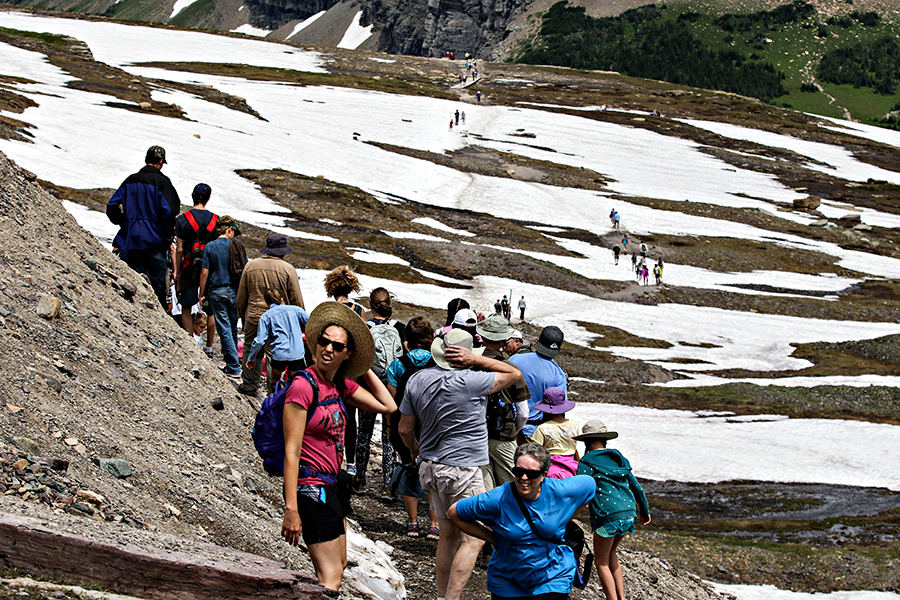After years of rising visitation in Glacier National Park, recent headlines declaring a drop in visitors to Northwest Montana’s most iconic destination have left some wondering if the park’s popularity has dipped.
But Pam Ziesler, who runs the National Park Service’s Visitor Use Statistics Program, said that’s not the case and that the slight drop in visitation actually reflects park visitation nationwide.
Visitation was down 2.96 percent in July compared to the same month last year. According to statistics released by the National Park Service (NPS) earlier this month, 883,973 people visited the park this July, down from 910,921 in July 2018. In the first seven months of 2019, 1,683,642 people have visited the park, down 3.22 percent from the first seven months of 2018 when 1,739,639 people visited.
In June, visitation was down 2.2 percent when compared to the same month in 2018.
Ziesler said that 2 to 3 percent drop is within the margin of error for the park statistics and is reflective of a decline in overall park visitation. According to unverified numbers released by the NPS earlier this month, visitation across the entire park system is down 1.14 percent, or 2.1 million people. Ziesler said a number of factors could impact visitation, including the economy, gas prices and weather. Most likely, however, is that visitation is simply leveling off after two historic years; 2016 was a record breaker thanks to the park service centennial and 2017 saw a spike because of the solar eclipse.
“These fluctuations are very natural,” Ziesler said. “Some parks are up, some parks are down … Glacier Park is tracking very closely to what we’re seeing overall.”
Ziesler said while numbers the NPS produces every months seem exact, they’re not. The figures are the result of a complicated equation that counts vehicles entering the park.
At places like West Glacier, St. Mary, Many Glacier, Two Medicine and Camas, an inductive loop traffic counter is implanted in the road. Ziesler said it essentially acts like a big metal detector, and every time a vehicle passes over it, it adds to the vehicle count. At lesser-used entrances, like Polebridge and Walton, a pneumatic tube traffic counter is used. The counter features a tube that crosses the road and is a standard tool for studying traffic.
Every passenger vehicle that comes into the park, be it a small sports car with one passenger or a loaded 15-passenger van counts for 2.9 people, Ziesler said, which is a previously established passenger average. Tour buses are calculated differently.
Ziesler said statisticians use a formula to calculate how many employees are coming into the park and then subtract that from the monthly total.
Statisticians also use historic data to calculate visitation at other remote entrances, like at the Belly River Trailhead. In years past, an average of 5,000 people entered the park there in May and September and about 10,000 in June, July and August.
Ziesler said calculating the visitation number is not a perfect science, but it’s the best way they have to determine how many people are coming to the park.
Overall, though, Ziesler said it’s unlikely that Glacier Park is losing its popularity.
“As someone who watches these numbers all day, being down a few percentage points is not that much different than what you saw last year, statistically speaking,” she said.
